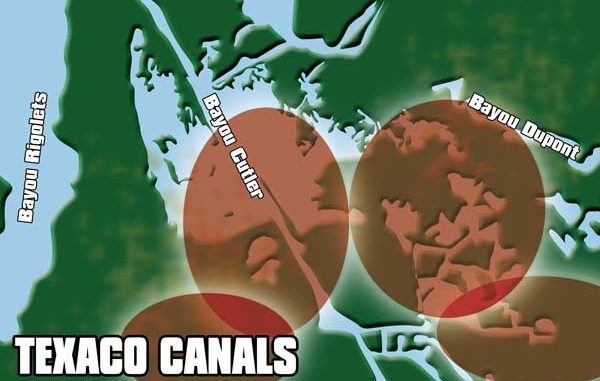
It seemed strange to motor past the area where all the other boats were turning in, but that’s exactly what we did.
All the news out of Lafitte for the past week was that the Pen was on fire. Speckled trout action was red hot, and anglers were coming from all over to make the short hop from the marinas to the perennial hotspot.
The neat thing about the Pen is that you almost can’t go wrong. It’s located a stone’s throw from any of Lafitte’s marinas, so you don’t need complex directions or a big boat or a tank of gas to get there.
Like most areas, the Pen can run hot or cold, but when it’s hot, the fish will hit almost anything you toss, and every angler, be they amateur or pro, can catch his share. And there are no secrets here — no secret spots or secret baits or secret techniques. Just line up where you see all the other boats (be courteous, of course), and start casting. The area is big enough to host an armada of boats, and when the fish are in there, there will be an armada pursuing them.
The armada was out in full force on this recent, cold winter morning, and every boat we saw either made the turn into the Pen from the Barataria Waterway, or they were already in there.
But we didn’t turn. We motored right past the cut and headed farther south toward the Texaco Canal system, where we figured not only would there be fish, but we’d have them virtually to ourselves.
Capt. Mike Daigle called just a night or so before, and told me of an exploratory trip he’d just made into the Texaco Canals.
“Twenty-five casts, and twenty-five trout,” he said.
He didn’t have to say anything else.
“When are we going?” I asked.
So, here we were, headed south into that confusing hodge-podge of cuts, canals and dead-ends collectively known as “The Texaco Canals.”
If you look at the area on a chart, it looks exactly like what my grandmother used to call “chicken scratch.” It’s a bunch of lines on a map running in all directions without apparent rhyme or reason. Of course, when the oil companies dug all those canals, they had a reason — oil! Black gold and natural gas, resources Louisiana held in abundance and the whole country clamored for. The canals were a hubbub of oilfield activity for decades back when it was profitable to work them rather than import everything.
But when they became unprofitable, the oil companies capped them up and abandoned them faster then rats desert a sinking ship. Unfortunately, they didn’t bother too much with cleaning up their mess. Almost everywhere you look in Lafitte’s waters, you see oilfield debris. This is not the debris of Katrina’s aftermath, but a shameful testimony of how roughshod the oil companies formerly ran over Louisiana’s fragile marshes.
Not only is the debris unsightly, it poses serious navigation hazards. I couldn’t help thinking that no state in the Union would have allowed this kind of pillage.
But now, with the recent surge in oil and gas prices, it’s become profitable once again to work the old wells and even drill some new ones, so tugs, barges and workboats are back, ferrying workers, checking gauges and pumping oil and gas from deep underground.
For anglers, the canals are always a winter draw, where structure and deeper water combine to provide forage and habitat for fish seeking a place to ride out the coldest months of the year.
Our plan was to work back toward the area known as the Clearwater Canals because its one of Daigle’s favorite winter haunts. But since virtually all the boats were snuggling together in the Pen like a football team in a huddle, we had the whole Texaco system almost to ourselves. Daigle decided to kill the outboard and test the waters in one of the main canals.
“We don’t usually fish this canal too often because of the boat traffic running through it,” he said. “There are fish in here, but just about every time you get them started, a boat will pass by and shut everything down for 15 minutes or so. And just when it starts up again, here comes another boat. So, as a result, we just don’t fish here because it’s too frustrating.”
We had invited Capt. Papa Joe Bush to fish along with us, and looked forward to his company, but he said he had come down with the flu or something and couldn’t make it. I suspected he went duck hunting instead, but I refrained from mentioning my suspicions.
So with just Daigle and me aboard, we had the whole boat to ourselves, and the whole Texaco System to ourselves. And with my very first cast, I had a good thump on the business end of my line. But I was unprepared for such immediate action, and my reflexes seemed to respond in slow motion. Daigle got thumped twice before he reeled in an empty hook as well.
“One of the most important things about winter fishing is having a sensitive rod,” Daigle said. “I prefer to use a 7-foot medium- or medium/light-action Falcon for fishing these canals because the rod is so sensitive.
“When I fish with more people in the boat, I use a 6-foot, 6-inch medium-action rod, which, in my estimation, is the best overall multipurpose rod for speckled trout and marsh reds.
Click here to read the rest of this feature, which first appeared in the February 2008 issue of Louisiana Sportsman magazine.
